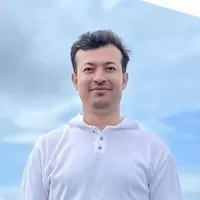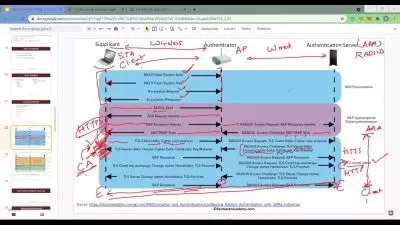Mastering CST Antenna Design: From Basics to Brilliance
Fawad | 1.4 Million Students | #1 Best MATLAB Programming | MATLAB SIMULINK | CST Antenna Design | Python Programming Course,Munir Malik
4:09:07
Description
CST Studio: Full Practical Antenna Design Course from Beginners to Expert (S-Parameters, Gain, Loss Antenna Design)
What You'll Learn?
- Antenna Design Course for students would learn to design antenna geometry step-by-step with a detailed explanation.
- Students of antenna design course will become experts by observing the practical microstrip patch antenna designing process in CST DESIGN STUDIO.
- Students will learn antenna design structure optimization in CST Studio, covering parameter sweeps and the mathematical aspects of dimension calculation.
- Students will learn about antenna terms such as VSWR, Return Loss, Reflection coefficients, Gain, and S-parameters. They will also observe polar plots and radia
- Expert to use antenna design in their carrier.
Who is this for?
What You Need to Know?
More details
DescriptionDelving deeply into fundamental concepts essential for antenna design, this comprehensive course covers a range of key topics including S-parameters, reflection coefficients, gain, return loss, voltage standing wave ratio (VSWR), and antenna efficiency. Seamlessly integrating CST antenna design and optimization methodologies, the course offers an extensive exploration of antenna mathematics. Microstrip patch antennas offer various geometries for optimal performance. Rectangular patches are common due to their simplicity and versatility. Circular patches exhibit circular polarization and compact size, suitable for satellite communication. Elliptical patches provide flexibility in tuning polarization and beam shape. Triangular patches offer directional radiation patterns for specific applications. Additionally, fractal geometries enhance bandwidth and miniaturization. Each geometry has distinct advantages, influencing factors such as bandwidth, gain, and radiation pattern, making them suitable for diverse wireless communication scenarios. By leveraging parametric sweep techniques, participants rigorously pursue the optimization of antenna geometry with the aim of minimizing reflection at the specified operating frequency. Throughout the course, simulation results are thoroughly discussed, and multiple possible cases are presented. Discussions include polar plots, gain plots, S11 plots, and their corresponding axes. This systematic and hands-on approach not only provides novices with a solid foundation but also cultivates advanced proficiency in antenna engineering.
Who this course is for:
- Students and Professional working in Industry can design antenna
Delving deeply into fundamental concepts essential for antenna design, this comprehensive course covers a range of key topics including S-parameters, reflection coefficients, gain, return loss, voltage standing wave ratio (VSWR), and antenna efficiency. Seamlessly integrating CST antenna design and optimization methodologies, the course offers an extensive exploration of antenna mathematics. Microstrip patch antennas offer various geometries for optimal performance. Rectangular patches are common due to their simplicity and versatility. Circular patches exhibit circular polarization and compact size, suitable for satellite communication. Elliptical patches provide flexibility in tuning polarization and beam shape. Triangular patches offer directional radiation patterns for specific applications. Additionally, fractal geometries enhance bandwidth and miniaturization. Each geometry has distinct advantages, influencing factors such as bandwidth, gain, and radiation pattern, making them suitable for diverse wireless communication scenarios. By leveraging parametric sweep techniques, participants rigorously pursue the optimization of antenna geometry with the aim of minimizing reflection at the specified operating frequency. Throughout the course, simulation results are thoroughly discussed, and multiple possible cases are presented. Discussions include polar plots, gain plots, S11 plots, and their corresponding axes. This systematic and hands-on approach not only provides novices with a solid foundation but also cultivates advanced proficiency in antenna engineering.
Who this course is for:
- Students and Professional working in Industry can design antenna
User Reviews
Rating
Fawad | 1.4 Million Students | #1 Best MATLAB Programming | MATLAB SIMULINK | CST Antenna Design | Python Programming Course
Instructor's CoursesMunir Malik
Instructor's Courses
Udemy
View courses Udemy- language english
- Training sessions 25
- duration 4:09:07
- Release Date 2024/05/18

















